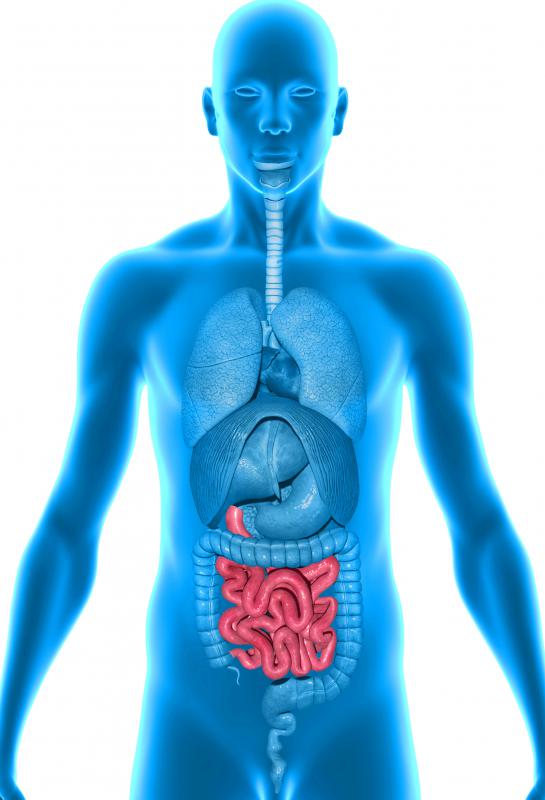At WiseGEEK, we're committed to delivering accurate, trustworthy information. Our expert-authored content is rigorously fact-checked and sourced from credible authorities. Discover how we uphold the highest standards in providing you with reliable knowledge.
What is an Infarct?
An infarct is any tissue that has died as the result of not receiving oxygen, usually caused by some sort of problem with the local flow of blood. It is possible for an infarct to form in many different parts of the body, and can be categorized into two main types. Hemorrhagic infarcts typically affects organs, such as the lungs or small intestines, and can be characterized by a vein or veins becoming blocked by clotting agents and red blood cells. The other main type is the anemic infarct, which tends to affect organs with a more solid construction like the kidneys. These infarcts are usually caused by a blocked artery, resulting in little or no blood supply to the organ.
Hemorrhagic infarcts are often referred to as red infarctions, due to the presence of red blood cells. As fibrin clotting agents and red blood cells occlude a vein or artery, blood may hemorrhage into the tissue resulting in the red color these infarctions are known for. The tissue may then be deprived of oxygen, as blood is no longer flowing normally.

The other type of infarct is often called a white infarction due to the lack of blood in the tissue. These anemic infarcts usually occur in the spleen, kidneys, or other similarly solid organs. They are often caused by the blockage, or vasoconstriction, of an artery that provides blood flow to the organ. The organ tissue, deprived of blood, may exhibit a pale color. It is sometimes possible for one of these anemic infarctions to become a hemorrhagic infarct when the blood supply returns to the organ after the ischemic event.

Different types of infarcts may also be referred to by the particular organ they affect. A myocardial infarction involves the death of cell tissue within the heart, and may also be called a heart attack. This type of infarction usually occurs when a plaque within an artery breaks loose, clogs the vessel, and cuts off oxygen supply to the heart. Similarly, a splenic infarction involves the occlusion of one a blood vessel that supplies the spleen, and a cerebral infarction refers to the blood supply being cut off from the brain.

Infarctions may also involve a limb or even the bones. In the case of a limb infarction, the main causes tend to be an embolism within an artery or a vein thrombosis. Unlike many other types of infarct, those that affect a limb may take several hours to cause irreversible damage. This is because skeletal muscles can often utilize anaerobic metabolism, which is not possible for organs like the brain that do not have access to glycogen. Bones may be more vulnerable to ischemic events, but are typically good at healing after the restoration of blood flow.
AS FEATURED ON:
AS FEATURED ON:















Discuss this Article
Post your comments